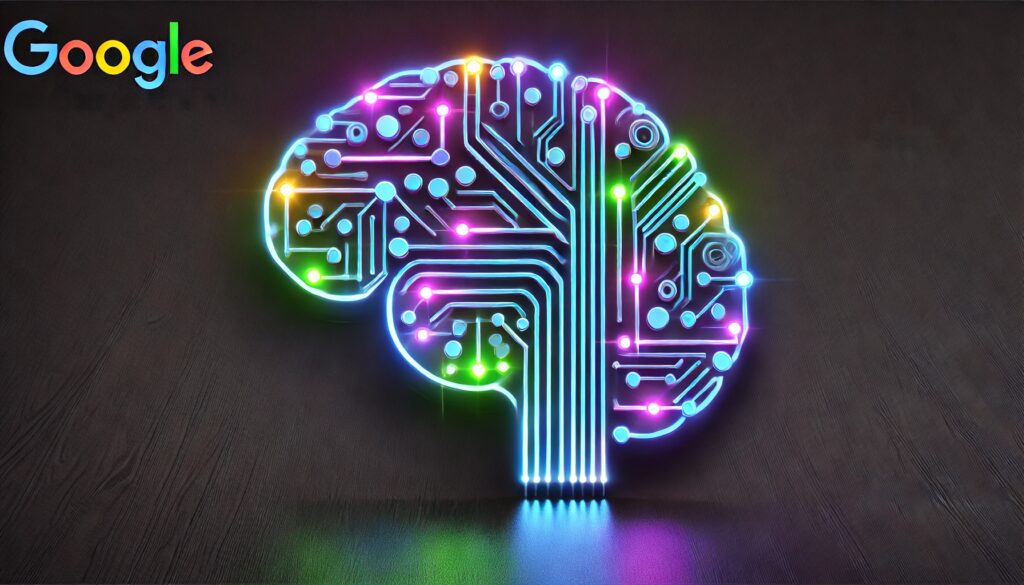
Unveiling the Future of Artificial Intelligence
Artificial Intelligence is constantly evolving, pushing the boundaries of what’s possible. MIT’s Ada system is at the forefront of this revolution. This advanced AI system represents a significant leap in technology, promising to reshape industries and daily life.
What is the Ada System?
Named after Ada Lovelace, the Ada system is a groundbreaking AI developed by MIT. It integrates machine learning, natural language processing, and robotics to create a highly adaptive and intelligent platform. Ada is designed to understand complex tasks, learn from experience, and interact with humans in a natural and intuitive manner.
The Technology Behind Ada
At its core, Ada leverages state-of-the-art neural networks and deep learning algorithms. These technologies enable Ada to process vast amounts of data quickly and accurately. By mimicking the human brain’s structure and function, Ada can make decisions and solve problems in real-time.
Advanced Machine Learning
Machine learning is a critical component of the Ada system. Unlike traditional programming, where specific instructions are given to perform a task, machine learning allows Ada to learn from data. The more data Ada processes, the smarter it becomes. This ability to learn and adapt makes Ada exceptionally powerful.
Natural Language Processing
Natural language processing (NLP) is another key feature of the Ada system. NLP enables Ada to understand and respond to human language in a way that feels natural and intuitive. This capability is crucial for applications in customer service, education, and healthcare, where effective communication is essential.
Robotics Integration
Ada’s integration with robotics is perhaps one of its most exciting aspects. By combining AI with robotics, Ada can perform physical tasks that require precision and adaptability. This integration opens up possibilities in manufacturing, healthcare, and even home automation.
Applications of Ada
The potential applications of the Ada system are vast and varied. Here are some key areas where Ada is making an impact:
Healthcare
In healthcare, Ada is used to diagnose diseases, recommend treatments, and even assist in surgeries. Its ability to analyze patient data and identify patterns can lead to more accurate diagnoses and personalized care plans.
Diagnostics
Ada can sift through thousands of medical records, imaging results, and genetic information to identify potential health issues early. This capability significantly enhances the speed and accuracy of diagnostics, leading to better patient outcomes.
Treatment Recommendations
Based on the diagnosis, Ada can suggest treatment plans tailored to the individual patient. This personalized approach considers the patient’s medical history, current health condition, and even genetic factors, ensuring the most effective treatment.
Education
Ada is transforming education by providing personalized learning experiences. It can adapt to each student’s learning style and pace, offering customized lessons and feedback. This tailored approach helps students grasp complex concepts more effectively.
Personalized Learning
Ada uses machine learning to understand the strengths and weaknesses of each student. It then adjusts the curriculum to address gaps in knowledge, providing a more effective learning experience.
Virtual Tutors
Ada can serve as a virtual tutor, offering assistance with homework, explaining difficult concepts, and even preparing students for exams. This round-the-clock availability ensures that students always have access to help when they need it.
Business
In the business world, Ada is streamlining operations and enhancing productivity. It can handle customer service inquiries, analyze market trends, and optimize supply chains. By automating routine tasks, Ada allows human employees to focus on more strategic activities.
Customer Service
Ada’s NLP capabilities make it an excellent tool for customer service. It can handle inquiries, provide information, and even resolve issues without human intervention, leading to faster and more efficient service.
Market Analysis
Ada can analyze vast amounts of market data to identify trends and insights. This information is invaluable for businesses looking to stay ahead of the competition and make informed strategic decisions.
Supply Chain Optimization
By analyzing data from various points in the supply chain, Ada can identify inefficiencies and suggest improvements. This optimization can lead to significant cost savings and increased productivity.
Ethical Considerations
As with any advanced technology, the Ada system raises important ethical questions. MIT is committed to ensuring that Ada is developed and used responsibly. This includes addressing concerns about privacy, security, and bias in AI decision-making.
Privacy
Ada processes vast amounts of personal data, particularly in healthcare and education. Ensuring that this data is kept private and secure is a top priority. MIT has implemented robust security measures to protect sensitive information.
Bias in AI
AI systems can sometimes exhibit bias, reflecting the data they were trained on. MIT is actively working to identify and mitigate any biases in Ada, ensuring that it makes fair and impartial decisions.
The Future of Ada
The future of the Ada system is bright. MIT continues to refine and expand its capabilities, pushing the boundaries of what AI can achieve. As Ada evolves, it will become even more integrated into our daily lives, making tasks easier and more efficient.
Continuous Learning
One of the most exciting prospects for Ada is its ability to continuously learn and improve. As it processes more data and encounters new situations, Ada will become even more adept at understanding and responding to complex challenges.
Expanded Applications
While Ada is already making an impact in healthcare, education, and business, its potential applications are limitless. Future developments could see Ada integrated into areas like environmental monitoring, public safety, and smart cities.
Frequently Asked Questions (FAQs)
Q: What makes the Ada system unique compared to other AI systems? A: The Ada system is unique due to its integration of machine learning, natural language processing, and robotics. This combination allows it to perform complex tasks, learn from experience, and interact with humans in a natural and intuitive manner.
Q: How does Ada ensure the privacy of personal data? A: MIT has implemented robust security measures to protect sensitive information. Ada processes data securely, ensuring that privacy is maintained, especially in critical fields like healthcare and education.
Q: Can Ada be used in small businesses, or is it only for large enterprises? A: Ada is versatile and scalable, making it suitable for both small businesses and large enterprises. Its ability to handle customer service inquiries, analyze market trends, and optimize supply chains can benefit businesses of all sizes.
Q: What measures are in place to prevent bias in Ada’s decision-making? A: MIT is actively working to identify and mitigate biases in Ada. This involves using diverse and representative data sets during training and continuously monitoring Ada’s performance to ensure fair and impartial decision-making.
Q: How can I integrate Ada into my business or organization? A: Integration of Ada into your business or organization can be facilitated through MIT’s partnership programs. Contact MIT for more information on how to leverage Ada’s capabilities to enhance your operations.
Q: What future developments can we expect from the Ada system? A: Future developments for Ada include enhanced learning capabilities, expanded applications in new industries, and improved integration with other technologies. MIT is continually working to push the boundaries of what Ada can achieve.
Conclusion
MIT’s Ada system is a testament to the power of innovation and technology. It exemplifies the incredible potential of AI to transform our world. As we move forward, systems like Ada will play an increasingly important role in shaping the future.
For more information about MIT’s Ada system and its applications, visit the official website.





